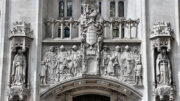Hundreds of thousands of leaseholders will be protected from the cost of replacing unsafe cladding on their homes, claimed Housing Secretary Robert Jenrick when unveiling a rescue package earlier this week
This comprised a five-point plan including an additional £3.5bn to go towards the cost of replacing unsafe cladding for all leaseholders in residential buildings that are six storeys and over in England.
This will ensure funding is targeted at the highest risk buildings in line with longstanding independent expert advice and evidence, said the minister.
Fire and rescue service statistics show buildings between 18 and 30 metres are four times as likely to suffer a fire with fatalities or serious casualties than apartment buildings in general, he said. Lower-rise buildings, with a lower risk to safety, will gain new protection from the costs of cladding removal with a new scheme covering buildings between 11 and 18 metres. This will pay for cladding removal – where it is needed – through a long-term, low interest, government-backed financing arrangement.
‘Under the scheme, no leaseholder will ever pay more than £50 a month towards the removal of unsafe cladding. This will provide reassurance and security to leaseholders, and mortgage providers can be confident that where cladding removal is needed, properties will be worth lending against’, said Jenrick.
There is also working with industry to reduce the need for external cladding safety assessment forms, a move that will allow ‘hundreds of thousands of homes to be sold, bought, or re-mortgaged once again’.
The package is accompanied with a new ‘Gateway 2’ developer levy applicable when developers seek permission to develop certain high-rise buildings in England. In addition there is to be a new tax on UK residential property development sector that is estimated to raise at least £2bn over the next 10 years that will be available to help pay for cladding remediation costs.
‘Remedying the failures of building safety cannot just be a responsibility for taxpayers’, said Jenrick.
‘Our unprecedented intervention means the hundreds of thousands of leaseholders who live in higher-rise buildings will now pay nothing towards the cost of removing unsafe cladding.
‘These measures will provide certainty to residents and lenders, boosting the housing market, reinstating the value of properties and getting buying and selling homes back on track. We are working with lenders and surveyors to make this happen’.






